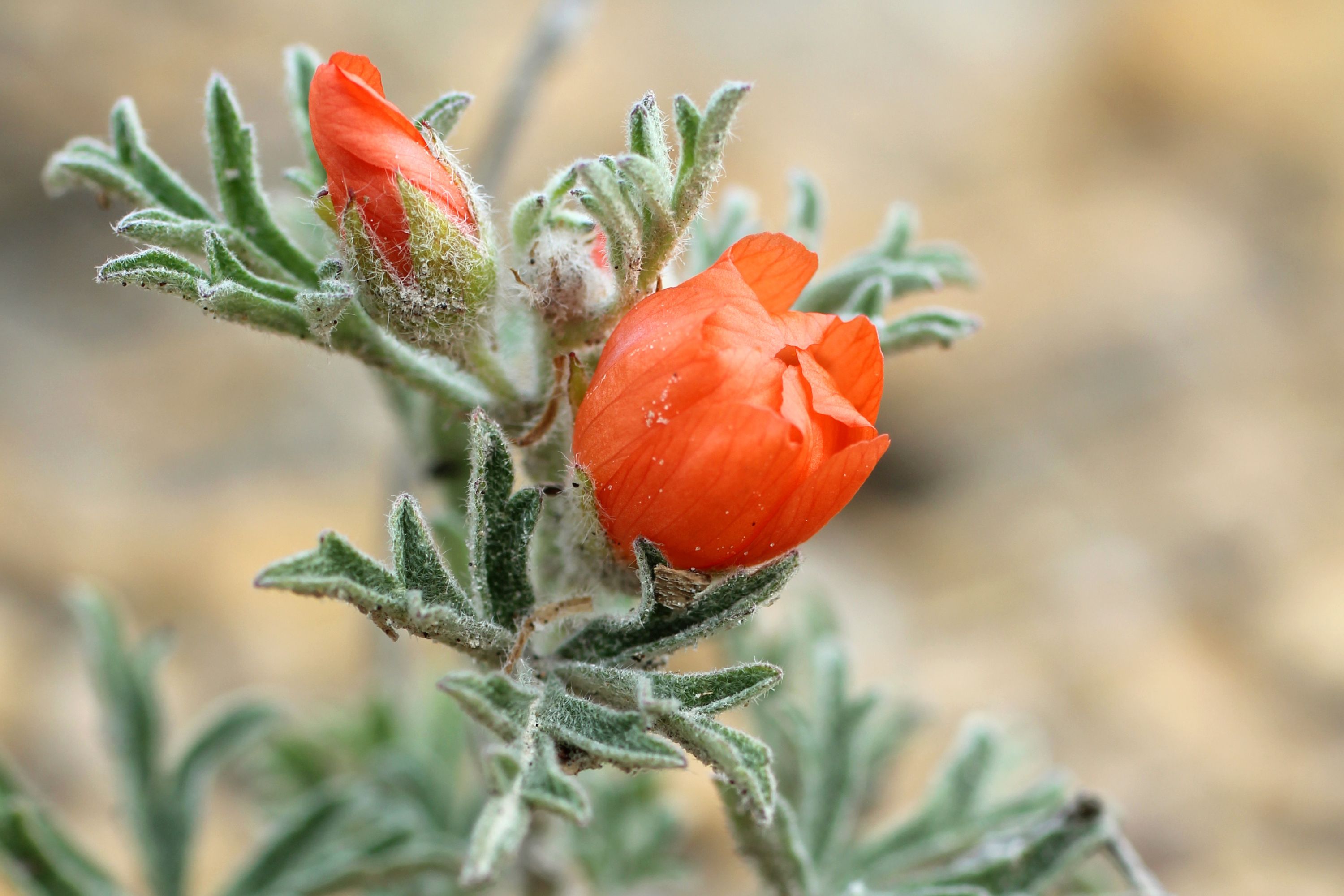Scarlet globe-mallow
(Sphaeralcea coccinea)

Description
Sphaeralcea coccinea, the scarlet globemallow, is a perennial plant growing 10–30 cm tall from spreading rhizomes with a low habit. They have grayish stems with dense, star-shaped hairs and alternately arranged leaves. The leaf blades are 2–5 cm long, palmately shaped, and deeply cut, with 3–5 main wedge-shaped segments. The undersides of the leaves have gray hairs. The 2-cm-wide flowers are reddish-orange and saucer-shaped, with 5 notched, broad petals, in small terminal clusters. Plants flower from May to October. This species is native to grasslands and prairies of the Great Plains and western regions of northern North America. While on the course of his expedition, near the Marias River, Meriwether Lewis collected a specimen of this species. Sphaeralcea is a genus of flowering plants in the mallow family (Malvaceae). There are about 40-60 species, including annuals, perennials, and shrubs. Most originate in the drier regions of North America, with some known from South America. They are commonly known as globemallows, globe mallows, or falsemallows. The name of the genus is derived from the Greek words σφαῖρα (sphaira), meaning "sphere," and αλκεα (alkea), meaning "mallow." The leaves of these plants are spirally arranged, and usually palmate or toothed. Both stems and leaves are downy. Like other Malvaceae, the flowers are saucer- or cup-shaped, with the stamens joined into a column in the center. Sphaeralcea species are used as food plants by the larvae of some Lepidoptera species including Schinia olivacea, which has been recorded on S. lindheimeri.
Taxonomic tree:







